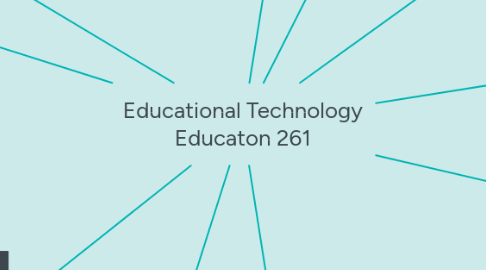Educational Technology Educaton 261
by Ashley Farnsworth


1. Standard 6: Use educational technology to promote student thinking/reflection to clarify students' conceptual understanding.
1.1. Embracing print in the age of digital use
1.2. Technology paired with multitasking
1.3. Ways technology has tried to revolutionize the educational industry
2. Standard 7: Use educational technology to make abstract content more accessible to students.
2.1. Making sure the content is tangible
2.2. Experimental Learning Cycle
2.2.1. 2. Observation & Reflection
2.2.2. 1.Concrete
2.2.3. 3. Abstract concepts
2.2.4. 4. Testing New Solutions
2.3. Representation Continuum within lesson
2.4. The Myth about "Learning Styles"
2.5. Shaping impatient problem solvers to become patient problem solvers
3. What the Internet is Doing to Our Brains. By: Nicholas Carr
3.1. The remapping that our brains go through when exposed to something new.
3.2. The way the medium's change the way we process information.
3.3. "Upgrade cycles"
4. Standard 8: Use education technology to engage students in collaborative knowledge construction.
5. Standard 9: Use educationa technology to reveal and access students' thinking.
6. Standard 1: Articulates a robust definition for technological literacy.
6.1. One's ability to use, evaluate, understand, and manage technology.
6.2. TPACK framework
6.3. Advantages/Disadvantages of use
6.4. The influence on our society
7. Standard 5: Advocate, model, and teach safe, legal, and/or ethical use of digital information and technology.
7.1. Plagarism/Copy rights
7.2. Digital Impacts:
7.2.1. Technotrash/e-waste
7.2.2. Effects on Humans/Environments
7.2.3. Digital Gaps
7.3. Digital Privacy:
7.3.1. Cyber-bullying
7.3.2. What information to put out thre
7.3.3. Identity Theft
7.4. Digital Distractions:
7.4.1. Texting & Driving
7.4.2. Addiction
7.4.3. Multitasking
7.4.4. Losing out on interactive relationships

